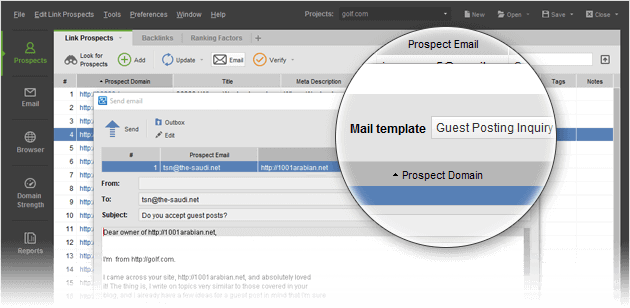Among
Internet Marketer, there seems to have controversy when it comes to baclinks, link building strategies & it's importance. if you ask a group of online marketer, What is a backlink?, Why are backlinks So Useful?, How do search engines evaluate backlinks?, importance of backlinks in seo? link earning, etc you'll get different & vague answers from them.
To make you clear, in this post I'll write simple to understand definition of Philosophy Behind Link Building & to help you make sense of what's backlinks truly harmful for your website.
So, What is a Backlink?
A backlink is a clickable piece of text or an image that links one website, webpage, or files to another. As an example here is a link to the
Local SEO Consultant at this website, which is surrounded by the anchor text "
Local SEO Consultant", So, we’ve got the answer of most important question out of the way.
Backlinks are also knows as Internal Links, Inbound Links & Outbound Links. Let’s move on to Why are backlinks So Important to the web in general as well as for SEO prospective.
Why are Backlinks So Important?
Without backlinks the world wide web (aka WWW) as we know it wouldn’t exist. Without backlinks, how would we ever browse the internet? Now I know you’re going to Say, well I could search in Google to find the results I want. That however is not really going to work because how could Google find and index all the webpages on the Internet without being able to search around from link to link?. And even google managed (Many of you believe, "Google can do anything!") to do it & how could you visit those webpages, if backlinks don't exist on google search index?
So, Backlinks are useful & also important, because it's the reference of the WWW. Without reference we’d still survive, but getting around would be pretty difficult, wouldn’t it?
For example, if a
Local SEO Expert has a website about
how to build healthy backlinks, and received a backlink from another website about
backlinks building, then that would be more relevant in a search engine's assessment than say a link from a site about carpet cleaning. The more relevant the site is that is linking back to your website, the better the quality of the backlink.
How do Search Engines Evaluate Backlinks?
Search engines like Google, Yahoo! & Bing crawl the world wide web looking for new content to display to their searchers. They go from link to link, site to site and page to page finding content so they can show them when someone searches a query which each page is highly relevant for. These links could be on websites or blogs or document or social media sites. This is one of many reasons why
backlinks is so important to SEO.
The number of backlinks is an indication of the popularity or importance of the particular website. Backlinks are important for SEO, because some search engines, especially Google, give more value to websites that have a good number of healthy quality backlinks, and consider those websites more relevant than others in their results pages for a user search query.
In Google's eye, A backlink considered to be a positive 'vote' for the receiving webpage from another granting webpage.
Why are Backlinks So Important in SEO?
In deciding how search engines rank webpages, they want to give their user the most relevant & useful result which satisfies the users search query. If you type ‘local seo services’ into Google and you get results for carpet cleaning and janitorial service companies, what are you going to do? You’re going to search in another search engine such as Bing or Yahoo!, and Google may have lost you as a user.
Google is the market leader in search and they have a 63.8% market share in the U.S according to
comScore Releases February 2016 U.S. Desktop Search Engine Rankings. They’ve achieved this by giving us the best results when we search for things compared to their competitors. Therefore the key is giving the most relevant set of results for any of the billions of possible things somebody could type into the search box.
Not only are backlinks the reference that search engines use to find webpages but backlinks are one of the major signals that search engines use to decide how relevant and authoritative a particular page is. The links which point at individual pages from other web pages around the internet really help search engines to understand more about pages and how to best arrange them to keep their users happy. You’d be surprised. There’s a lot of information that can be collected from a backlinks and they gather the maximum information possible!
When the search engines calculate the relevance of a site to a user search query (aka keyword), they consider the number of quality inbound links to that site. So we should not be satisfied with merely getting inbound links & it's quantity, it is the quality of the inbound link that matters most. A search engine considers the content of the sites to determine the quality of a link. When inbound links to your site come from other sites, and those sites have content related to your site, these inbound links are considered more relevant to your site. If inbound links are found on sites with unrelated content, they are considered less relevant. The higher the relevance of inbound links, the greater their quality.
For example, If you are an
Carpet Cleaner in Phoenix, Arizona and somebody searches for ‘carpet cleaner phoenix’ you want to be on page 1, right? Page 1 normally only has 10 results and you can bet that there are far more than 10 cleaners competing for that page 1 spot. Whilst there are a huge number of factors in Google’s algorithm and backlinks certainly aren’t the be all and end all, backlinks are one of the strongest factors currently used. In your case, Local SEO is highly important for your local businesses, and of course we do offer
local SEO services.
Another reason you may want to achieve backlinks is to allure more visitors to come to your website. You can't build a website, and then expect that people will find your website without showing user the way. You will probably have to get the word out there about your site. One way business owner & webmaster got the word out used to be through backlinking. Let's talk about, how can we help you to build backlinks.
How Can We Help You to Build Backlinks?
Backlinks Building is what we usually do. As discussed, backlinks are not the only important search engine ranking factor to be considered but in any good SEO campaign you will have to build high quality backlinks to your website to help to show search engines that your site is relevant for the keywords agreed upon at the keyword research stage of the SEO Strategy. Building backlinks is known as off site optimization.
Honestly, it’s not easy to get natural authority backlinks (Great Healthy Backlinks Require a Great Amount of Time, Work & Content), after all why would another webmasters or websites owner link back to your site. Our job with the SEO link building campaign is to help you to create mirthful link worthy content for your website and then to use various plans and methods to inspire relevant webmasters or websites owner to link back to your website & content.
The days are long gone, when low-quality reciprocal links, links from link-farms, & paid links worked for search engine organic ranking. Instead we focus our all attention to creating high quality content. We create a serious content marketing strategy & execute them accordingly. We’ll be able to establish your business website as an authority site within your given niche or industry.
What's About Reciprocal Links, Link farms, and Paid Links?
There is much discussion about reciprocal links, link farms, paid links & It's Importance last few years. In the
Google Jagger Update at October 2005, In this algorithm changes, Google released a series of updates, mostly targeted at low-quality links, including reciprocal links, link farms, and paid links. Reciprocal links were one of the targets of Google's Jagger update & Google not valuing reciprocal link exchange since then.
Many webmasters had agreed upon reciprocal link exchanges & paid links, in order to boost their website's rankings with the sheer number of inbound links. In a link exchange, one webmaster or website owner places a link on his website that points to another webmasters or owners website, and vice versa. Many of these links were simply not relevant, and were just discounted by google jagger algorithm update. So while the irrelevant backlink was ignored, the outbound links still got counted, diluting the relevancy score of many websites. This caused a great many websites to drop off the Google Organic Ranking.
In a Paid Links, one webmaster or website owner places a link on his website that points to another webmasters or owners website for money. This links too act as reciprocal link & but called one way reciprocal link.
We must be carefully dealt with these kinds of link. Google not only check the popularity of the sites being linked to, but also how trustworthy a site is that you link to from your own website. This will mean that you could get into trouble with the search engine just for linking to a bad website. Please read more about
google's Link schemes.
How to get rid of the harmful links Pointing to your website?
- Ask webmasters to remove the links.
- Submit the harmful links to Google disavow tool.
- Make sure to regularly re-check your links.
- Contact Us & We"ll Help you remove harmful links.
What's Link Earning?
Link Earning is the process of creating high quality content that other webmaster, website owner and bloggers cannot fail to link to your website content. And hey, this give you more power if you’re a recognized brand that can build your link portfolio this way. This is indubitably the ideal scenario for any website owner. But if you’re NOT recognized as a brand, however, this version of link earning Technics is highly unrealistic expectation for you.
Because Search Engine Algorithms are highly dependent on quality & authoritative backlinks, you’re not going to rank if you don’t have high enough quality backlinks.
And guess what? If you don’t rank high on search engine organic result, the primary reference that would allow people to find your website useful and amazing, is besieged for all intents and purposes.
So you can’t be found in search engine's organic search unless you have enough backlinks, and you can’t realistically “earn” links unless people are finding your site.
What If I Use Backlink Building Tool?
I wouldn't recommend you to use a backlink building software, it has to be "manual". If you use a link building software to build Automated links, Google will eventually find out and your website could be penalized.
Here are some Automated Link Building Techniques that are definitely going to caught by Google Algorithm:
- Spun Content Submission.
- Blog & Forum Commenting.
- Forum Profile & Comment Link.
- Low Quality Directory Submission.
- Private Blog Networks.
Be Careful Of Outgoing Links: I’m going to keep this part simple, here are some quick guides for outgoing links:
- Bad Neighbourhoods (spam, warez etc sites)
- Moderate or Remove any obvious spam from user generated content and apply nofollow to any outgoing links.
- Don’t link to low quality sites/content.
- If you are selling links, Add the nofollow attribute to the links.
- Add the nofollow attribute to any affiliate links.
- Don’t hide outbound links.
- Periodically review and clean up broken outbound links.
Need High Quality Authority Link Building? Contact to one of our
Link Building Specialists today to know more on how backlinks can help improve your website organic ranking.
How Do I Make a Begin Then?
 |
| Sylvester Stallone & Caitriona Balfe in Escape Plan Movie (2013) |
Have a good read of the pages and posts of this site. We try to straightforward SEO as much as we can at here, and there is some good guidance that we write regularly. We also emphasize the importance of Good SEO Campaign & Mobile Marketing and if you are looking for Local SEO Services & Citation Building Service, we can help. Once you’ve decided what services you need from us, just fill out
our contact form and we’ll get right back to you. We’d love to talk to you about your business and how we can help to take it forward online, and quite simply, make you more money.
Don’t worry, Our
Local SEO Services &
Citation Building Pricing is not expensive and we can talk through the options for you. We offer Guaranteed Local SEO and if you want instant traffic through PPC we can help you with
Adwords Campaign Management too. We’re confident that you will have a huge return on your investment from our service.
Contact Us Today!.


 in Rank Tracker and choose your target search engines to see your website's current ranks for the selected keywords.
in Rank Tracker and choose your target search engines to see your website's current ranks for the selected keywords.
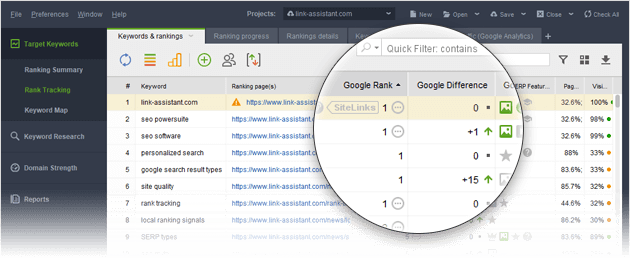
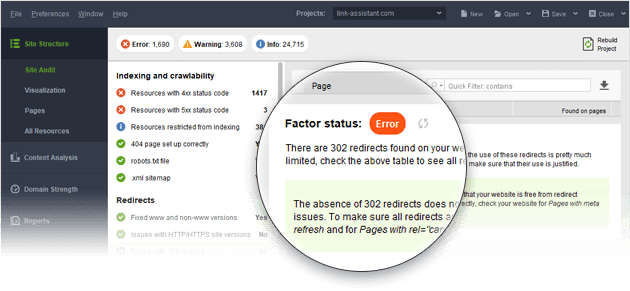


 to see if some of them may be doing your website more harm than good.
to see if some of them may be doing your website more harm than good.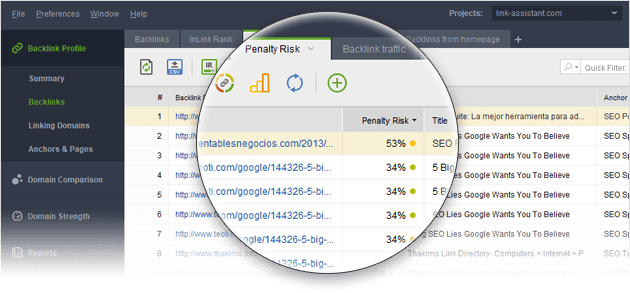
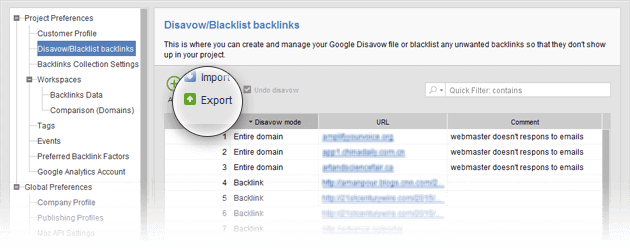
 to analyze their backlinks' quality. Pay attention to backlink authority factors like Page and Domain PR (or Moz's PA/DA), Domain Age, Link Value, etc., and identify top link sources. Export your shortlisted links through File -> Export or by copying them to a spreadsheet.
to analyze their backlinks' quality. Pay attention to backlink authority factors like Page and Domain PR (or Moz's PA/DA), Domain Age, Link Value, etc., and identify top link sources. Export your shortlisted links through File -> Export or by copying them to a spreadsheet.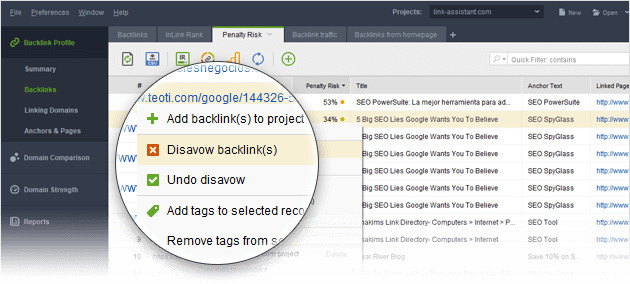
 .
.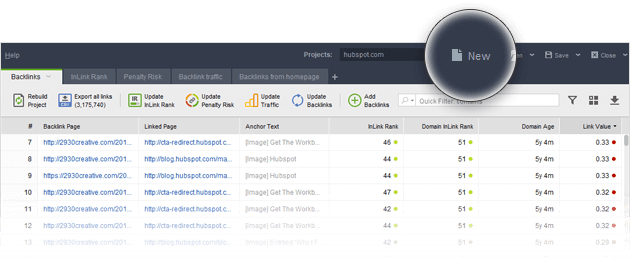
 to contact potential partners and inquire if there are link opportunities available, such as guest posts, listings in quality business directories, or others.
to contact potential partners and inquire if there are link opportunities available, such as guest posts, listings in quality business directories, or others.